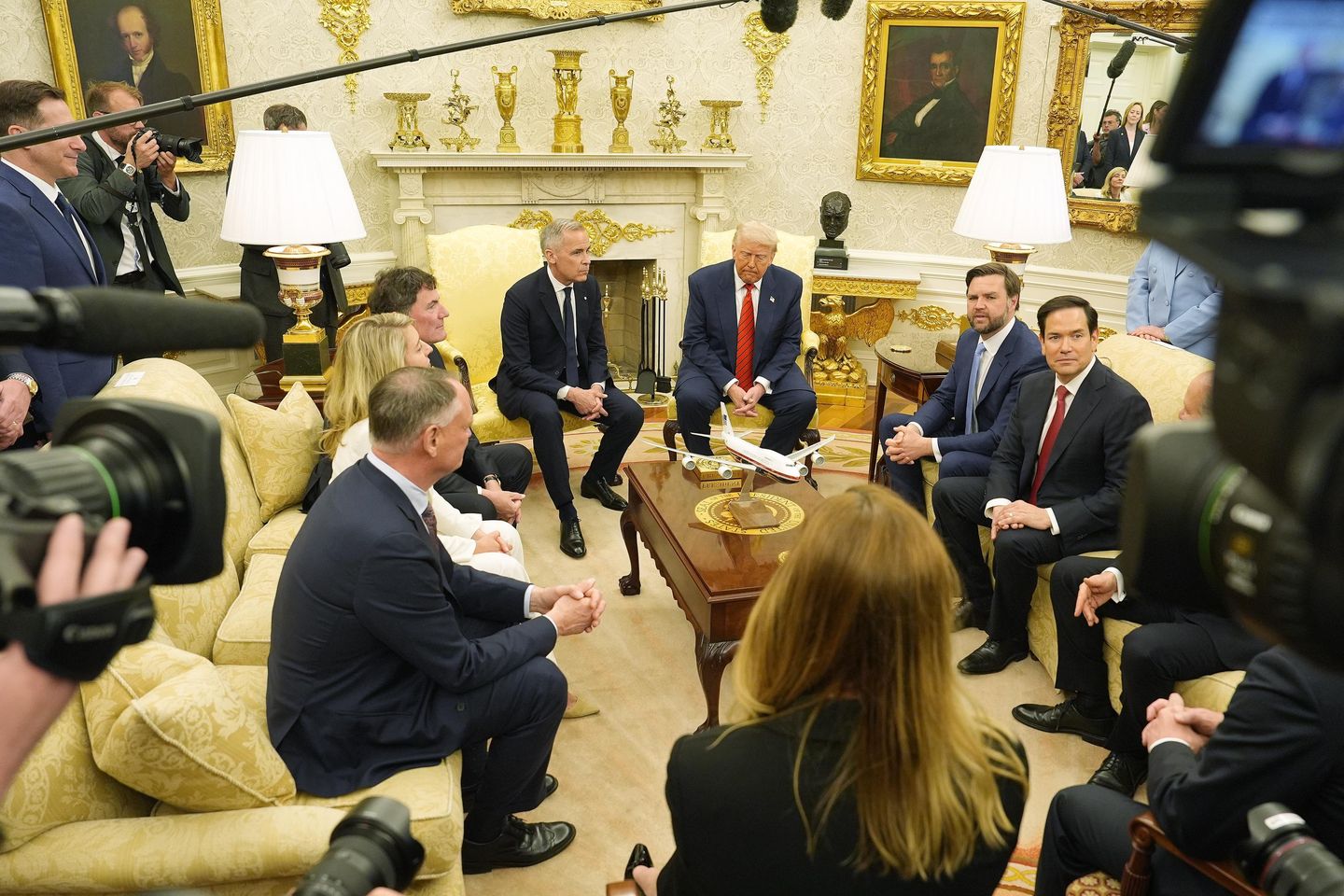
President Trump has turned White House visits by foreign dignitaries into a made-for-TV showcase for his unique brand of America First statesmanship.
Even when the meeting is fraught with tension and the Oval Office sit-downs threaten to go south, Mr. Trump doesn’t shy from the news media’s cameras — and his distinguished guests don’t get to, either.
Canadian Prime Minister Mark Carney, a Liberal Party leader who rode anti-Trump sentiment in his country to a big election victory this year, experienced Mr. Trump’s White House treatment on Tuesday.
Even after Mr. Carney pointedly said Canada won’t become a U.S. state and “won’t be for sale ever,” Mr. Trump said, “Never say never.”
“I’ve had many, many things that were not doable, and they ended up being doable,” the president said in front of a crush of news reporters in the Oval Office.
This public diplomacy has become a staple for Mr. Trump’s presidency as he welcomes a steady stream of foreign leaders at the White House. Nothing, it seems, is off limits in the public discussions: trade deals and tariffs, war and defense pacts, immigration and partisan intrigue.
Mr. Carney marks the 12th visit from a world leader in the just over 100 days since Mr. Trump returned to the White House.
Mr. Trump’s use of the White House visit is also in stark contrast to his predecessor, who gave short meetings and rare joint press conferences, often leaving world leaders to mingle with reporters on the White House driveway.
During his first term, Mr. Trump held 44 joint press conferences, double the number held by President Biden, according to The American Presidency Project.
The White House said the president “immediately reestablished America’s dominance on the world stage, bringing foreign leaders to the United States at an unprecedented pace.”
“From negotiating peace deals to securing our nation’s border and leveling the playing field for American businesses, the world is looking to President Trump because America is strong again,” White House spokeswoman Taylor Rogers said in a statement to The Washington Times.
Sit-downs in front of the Washington press corps benefit the foreign leader as much as the president. They get global exposure — and a chance to show their mettle going toe-to-toe with Mr. Trump.
“Trump’s trying to get his message out there, and that’s one way to do it, is to hold these events,” said Matthew Eshbaugh-Soha, a political science professor at the University of North Texas who has written about the politics of press conferences.
“He’s willing to take any of the risks,” he said, describing Mr. Trump’s style as “a really intense, constant trial balloon to see how people will respond.”
Putting these world leaders in front of his team, in front of the cameras, and in front of the press puts pressure on them.
“I have no doubt the White House thinks this is an effective strategy to put some foreign leaders on the spot,” Mr. Eshbaugh-Soha said. “It could be some leverage and pressure to get them to move in the president’s direction.”
The president has shared some eyebrow-raising foreign policy ideas at these meetings, including telling foreign leaders that their countries are ripping off the U.S.
His first meeting with a foreign leader was Israeli Prime Minister Benjamin Netanyahu on Feb. 4 and included discussions about the war in Gaza.
During a joint press conference, Mr. Trump said the U.S. could take over Gaza, move the Palestinians elsewhere, and turn the area into the “Riviera of the Middle East.”
When Salvadoran President Nayib Bukele was at the White House last month, he was put on the spot in the Oval Office over whether he would return Kilmar Abrego Garcia, a Salvadoran man in the U.S. illegally who was wrongfully deported to El Salvador’s mega-prison.
When reporters peppered Mr. Trump with questions about bringing Mr. Abrego Garcia back to the U.S., the president turned to Mr. Bukele. Mr. Bukele said, “Of course,” he would not return the man to the U.S.
Tensions flared when Mr. Trump sat with Ukrainian President Volodymyr Zelenskyy in the Oval Office.
The February meeting, in front of reporters, devolved into a heated yelling match in which Mr. Zelenskyy said the U.S. could “feel the effects” of conceding too much in the peace plan made with Russia. Vice President J.D. Vance called Mr. Zelenskyy disrespectful and rebuked him for not saying “thank you” for the U.S. support in the war.
The mineral deal was supposed to be signed later that day, also in front of the press, but it was canceled, and Mr. Zelenskyy was told to leave.
Some foreign leaders have moved in Mr. Trump’s direction since their meetings. Mr. Zelenskyy essentially went on an apology tour after he was asked to leave the White House. While a peace deal between Ukraine and Russia has yet to be signed, the mineral deal was finalized last week.
Israeli officials said Monday that Israel is moving forward with plans to capture the Gaza Strip, which Mr. Netanyahu called an “intensive” operation. He also said the Palestinian “population will be moved, for its own protection,” an idea that was first mentioned by Mr. Trump.
On Tuesday, Mr. Carney stuck to his guns about the U.S. not obtaining Canada as its 51st state. However, he said at a press conference afterward that “there will be zigs and zags” in the relationship with the U.S. He also said he felt there were signs of a “broader and healthy relationship.”
“We have a lot more work to do. I’m not trying to suggest at any respect that we can have one meeting and everything is changed,” he said, “but now we’re engaged.”












